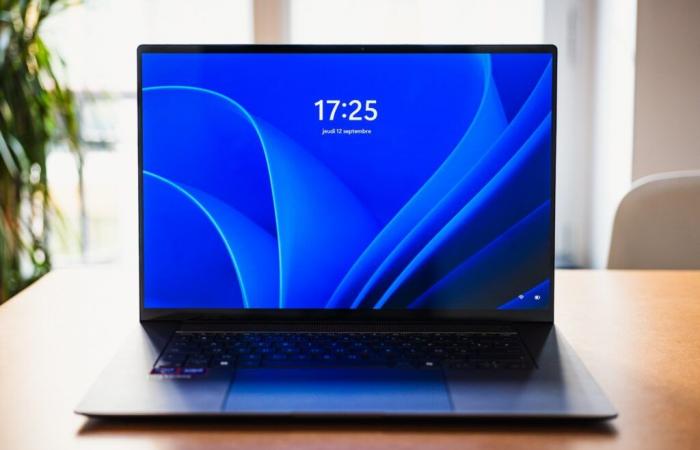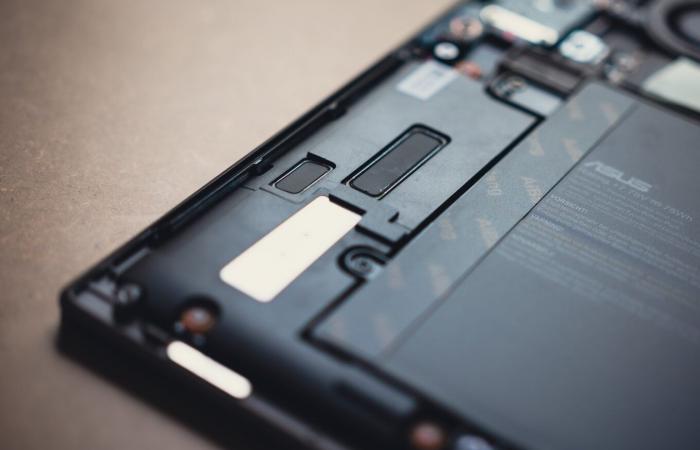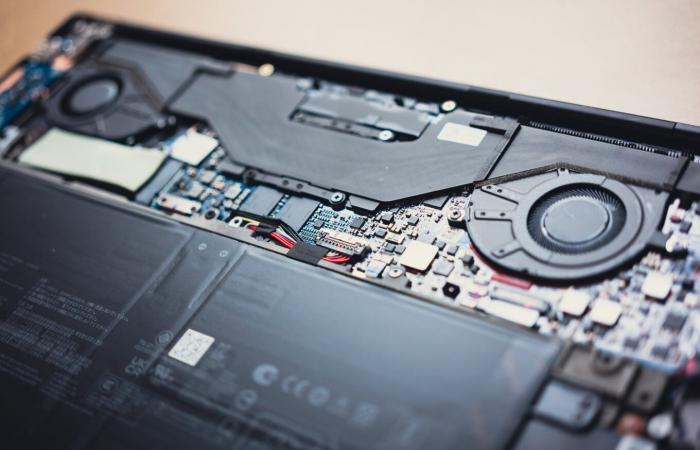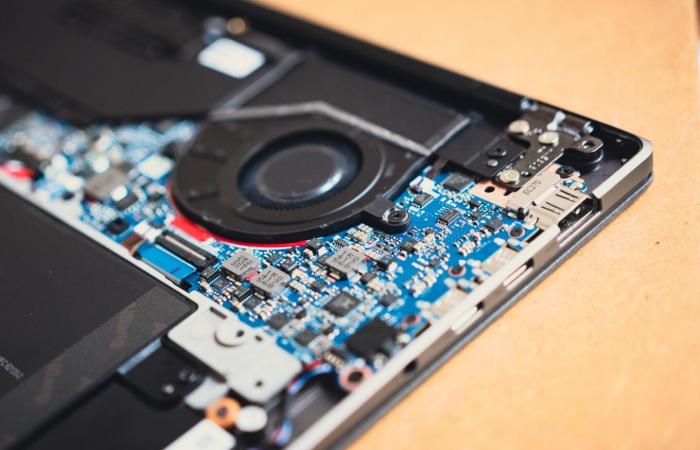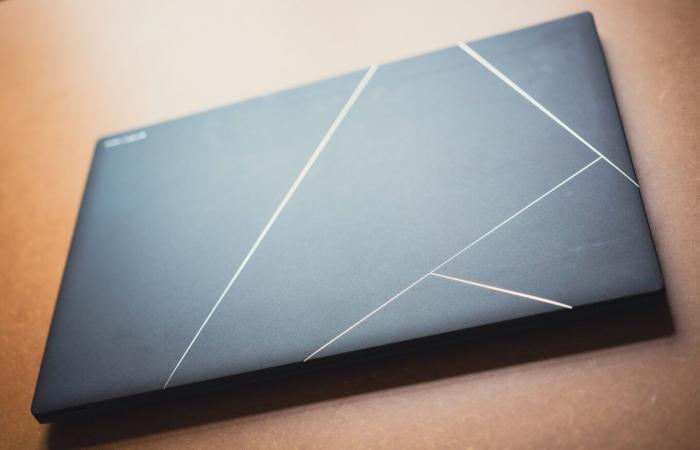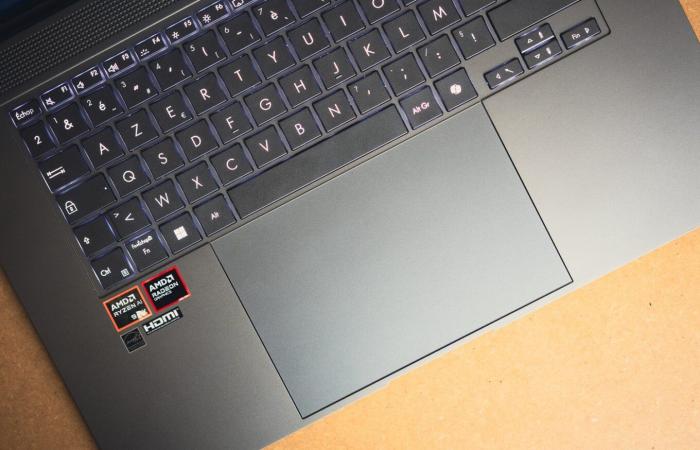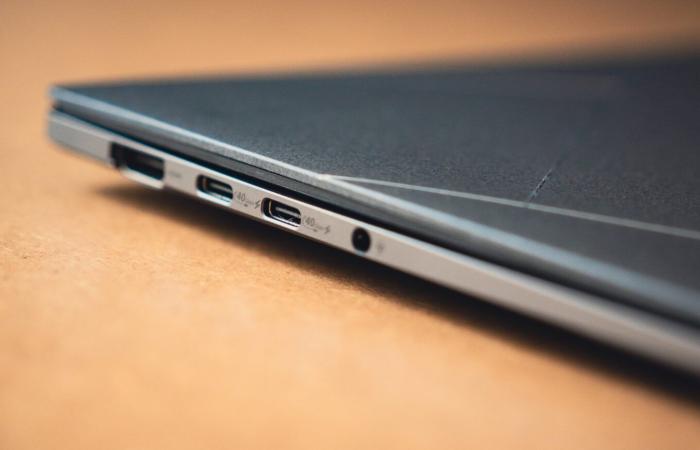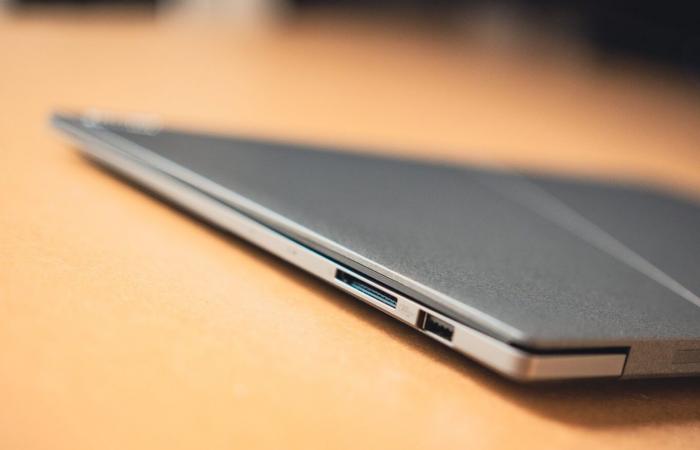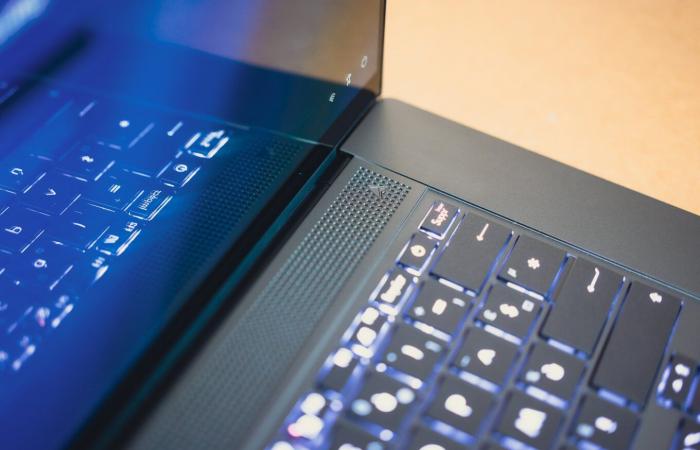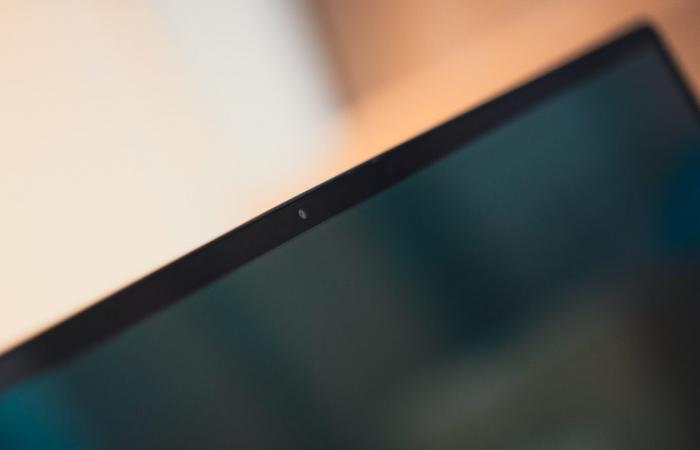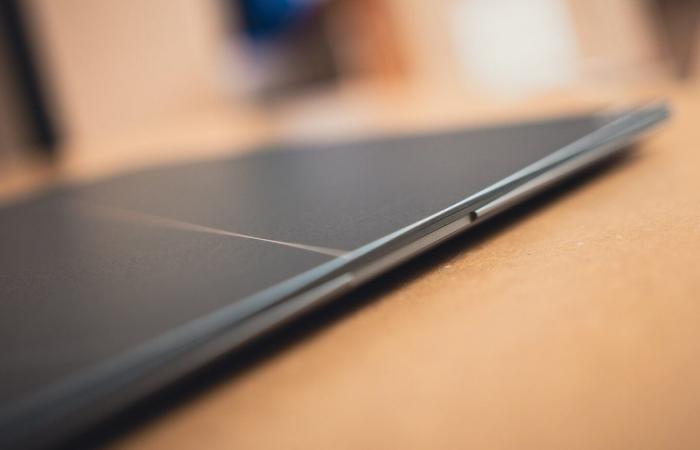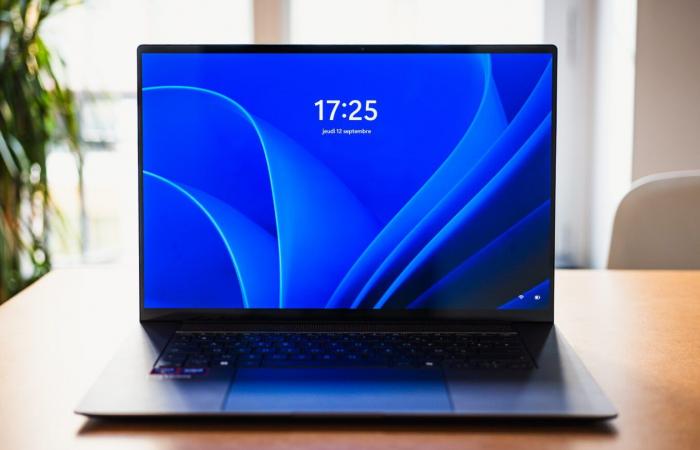Last June, we tested the first Snapdragon X Elite PC to hit the market: the Vivobook S15. The PC blew us away with its incredible autonomy and the perspectives it opened up by paving the way for ARM-based PCs, all for a relatively reasonable price. Not everything was perfect, however. Particularly the performance, but the essentials for an office work laptop were there: amazing battery life.
Faced with this onslaught from Qualcomm and its Snapdragon chips under ARM, we were impatient to know the response from AMD and Intel with x86 chips, the historic players in the market. We start with AMD which equips this Zenbook S16, still from Asus. This is the brand new AMD Ryzen AI 9 HX 370 chip.
Autonomy: in the match, but not completely up to par
The first sensitive point, as you will have understood, is undoubtedly autonomy. And let's cut short any suspense: the Zenbook S16 is not as imperial as its companion, but it comes out very honorably.
According to our versatile battery life test of the 01Lab, it even lasts only an hour less than the Vivobook under Snapdragon, which as a reminder, was placed at the level of the MacBooks, the champions of the genre.
Autonomy Charging time
Asus Zenbook S16 (UM5606)
Asus Vivobook S15 OLED Snapdragon X Elite (S5507)
We write it often, but a lab test is not always worth practical use, and that is the case here. The tiny difference in the lab turns into a real difference on a daily basis. Where the Vivobook under Snapdragon lost very little battery life at night and managed to last two days without any problem, the Zenbook under AMD is not as impregnable.
It remains rather durable all the same and will last the entire day without any problem, but the percentages tend to soar much more quickly than on its counterpart.
Performance: robust
Let's immediately reveal the match: the Zenbook S16 is doing very well against its Snapdragon counterpart.

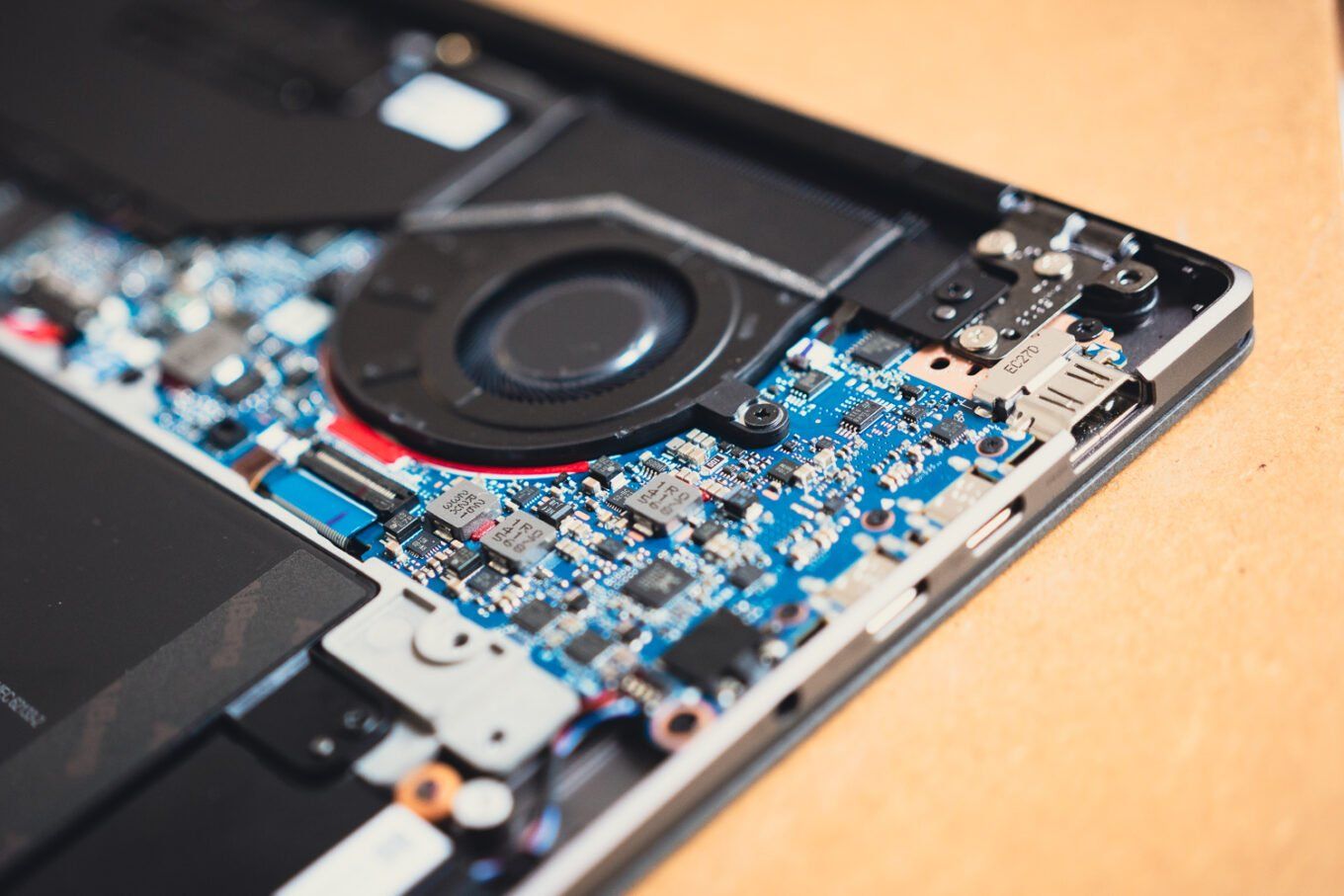
On Cyberpunk, he is much more comfortable, even if it will not be possible to play in Ultra.
Processor Cyberpunk 2077 1920 x 1080 (Basse) cyberpunk culture
Asus Zenbook S16 (UM5606) AMD Ryzen AI 9 HX370
Asus Vivobook S15 OLED Snapdragon X Elite (S5507) Qualcomm Snapdragon X Elite X1E-78-100
On The Division and Rise of the Tomb Raider, same fight, it always exceeds its minimum competitor by 10 to 15 FPS.
Tom Clancy’s The Division 1280 x 720 Ultra Tom Clancy’s The Division 1920 x 1080 Ultra Tom Clancy's The Division in Ultra native definition Rise of the Tomb Raider 1280 x 720 DX12 Rise of the Tomb Raider 1920 x 1080 DX12 Rise of the Tomb Raider en définition native DX12
Asus Zenbook S16 (UM5606)
Asus Vivobook S15 OLED Snapdragon X Elite (S5507)
In Benchmark, it's a little more complicated. The Asus Zenbook S16 seems a little outdated on the CPU side, but makes up for it in pure graphics power.
3DMark Night Raid score 3DMark Night Raid Graphics score 3DMark Night Raid CPU score 3DMark Fire Strike Extreme Graphics score 3DMark Fire Strike Extreme Physics score
Asus Zenbook S16 (UM5606)
Asus Vivobook S15 OLED Snapdragon X Elite (S5507)
The same goes for Geekbench, which also confirms the general trend: in single core, the AMD chip is more efficient than that of Qualcomm, but the latter makes up for it thanks to a high number of cores. We see this on the multi-core part. Also by the way, we have given you the Macbook Pro 14 Inch M3 Max as a reference but keep in mind that the latter is much more expensive.
Cinebench 2024 (CPU Multi Core) Geekbench 6 Single-Core Geekbench 6 Multi-Core Geekbench 6 Compute Score (GPU)
Asus Zenbook S16 (UM5606)
Asus Vivobook S15 OLED Snapdragon X Elite (S5507)
Apple MacBook Pro 14-inch 2023 M3 Max
In terms of performance, the Zenbook S16 is representative of its time: we therefore have a solid reserve of power for office automation, but also the possibility of looking for slightly more robust uses.
Design : ceralumn… ceralumignon ? Ceraluminum !
We have the right to a Ceraluminum chassis. Ceralumi what? This is a marketing name for a material made by Asus supposed to combine the properties of ceramic and aluminum. Its properties are supposed to be as follows:
- Scratch resistance;
- Lighter than ceramic;
- More resistant to color fading with wear and time;
As for scratches, over the month we spent with it, we actually didn't notice any, unlike what can happen with plastic or aluminum hulls.




In terms of weight, the PC stands at 1.5 kg, which remains reasonable for a 16-inch chassis and avoids having to endure it too much in the bag. The PC fits easily into the latter with its thickness of 1.19 cm, there is really enough to forget it.
Overall, it is a very pleasant material to the touch, especially on the back with the slight grooves that run through it. There is a feeling of robustness combined with a form of softness under the finger. To give you an idea of the sound produced, it is not very far from the noise produced by fingers on a sheet of tracing paper. It’s super cool!
Let us mention two final details on the finishes, one positive and one negative:
- Above the keyboard, particular effort has been made on the ventilation grille. Rather than classic holes, Asus has integrated small perforated balls which give a very nice texture and look to this part of the laptop that we end up seeing a lot.
- The bezels are very thin on the left and right sides, but they are a little thicker on top to accommodate the camera. By the way, there is no physical cover for the camera.
Let's move on to the keyboard. This one, very large, does not have a numeric keypad. It is quiet and comfortable and yet leaves room for a very very large touchpad. This works perfectly and integrates the now classic swipe shortcuts: a swipe to the left controls the sound, another to the right changes the brightness and on the upper part, it is possible to move forward or backward in multimedia content. A good idea on paper, but one that we will quickly deactivate as we frequently happen to vary the brightness by mistake.



Oh, and speaking of elements that we will end up forgetting, the keyboard does include a Copilot key, which allows you to launch the chatbot powered by Microsoft's generative AI. We only had limited use of it during our test. Let's take this opportunity to point out that Copilot+, Microsoft's complete software suite of AI features, should arrive on this device by the end of the year. In any case, it has 50 TOPS to claim on its NPU and therefore largely meets Microsoft's specifications which stand at 40 TOPS.
Screen: full headlights, left lane
Let's finish with the audiovisual experience offered by this PC and its screen. Before going into the figures, let's already establish our general impression: it is a 16:10 Oled screen (2880 x 1800) with a refresh rate of 120 Hz.
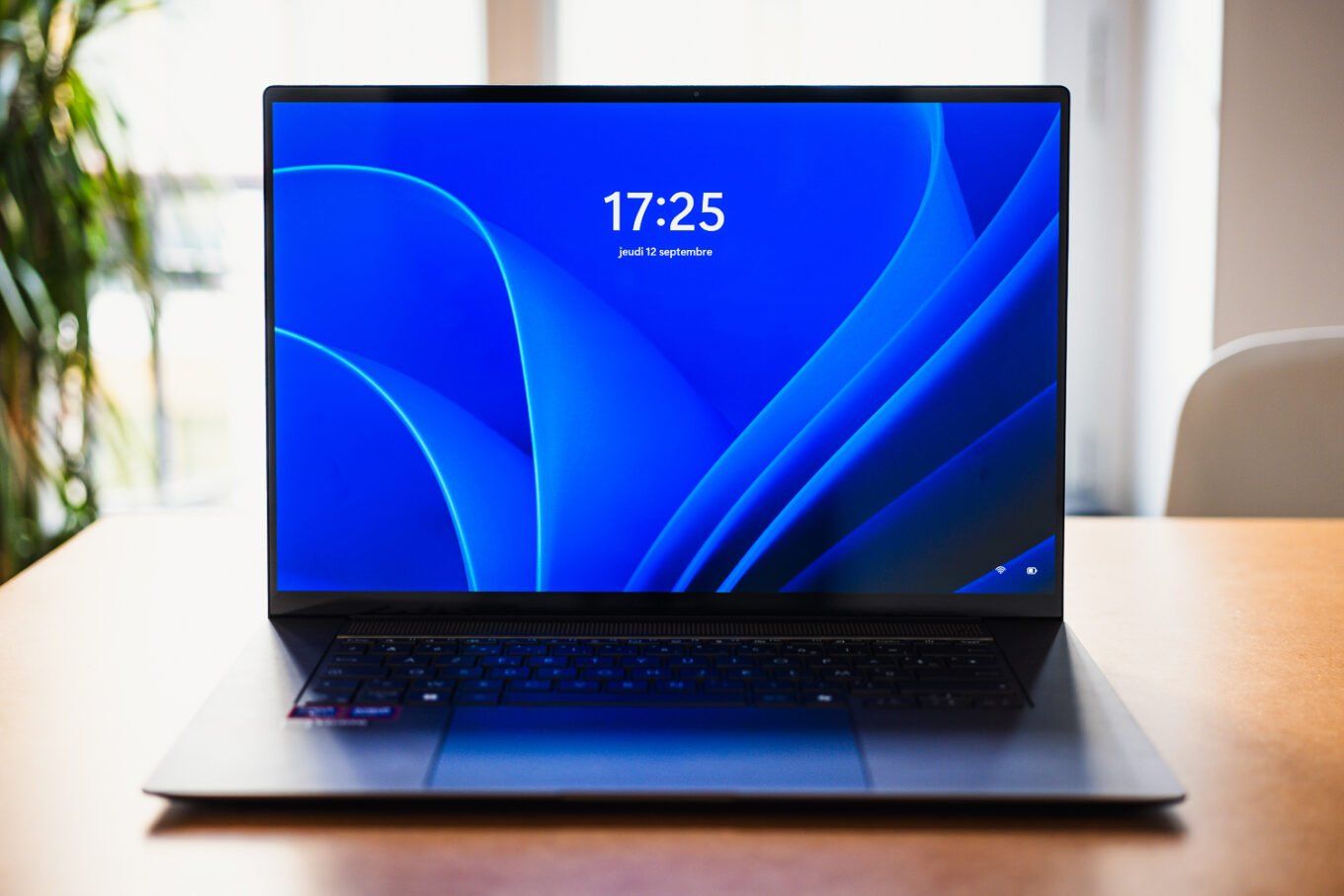

The result is immediate: we have a screen that is large, fluid and benefits from an almost infinite contrast ratio. In short, a real pleasure to use on a daily basis.
Screen brightness Color fidelity (delta E 2000 average)
Asus Zenbook S16 (UM5606)
Asus Vivobook S15 OLED Snapdragon X Elite (S5507)
The screen also offers a correct brightness (without being transcendental) of 392 cd/m² and good colorimetry management, with an average Delta E of 2.96.
Audio
For the audio part, the Asus Zenbook S16 does very well and delivers very decent sound for a laptop. Obviously, the bass is not very present, but it is a good illusion with a sound that is not too aggressive and not too muffled when placed on your knees.
Prix du Asus Zenbook S16 (UM5606)
The Asus Zenbook S16 (UM5606) costs 1900 euros. Only one configuration is offered, rather muscular, with 32 GB of LPDDR5X RAM and 1 TB of M.2 NVMe PCIe 4.0 storage.
Asus Zenbook S 16 at the best price Base price: €1,899
It is available in two colors: dark gray or off-white.
???? To not miss any news from 01net, follow us on Google News and WhatsApp.

